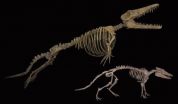(Press-News.org) CHESTNUT HILL, MA (November 7, 2012) – In a digital age where dissatisfied consumers vent their concerns through biting viral videos, nasty blog posts or negative online comments, managers need to develop strategies to soothe angry customers in person as well as online, according to a new study in the latest edition of the Journal of Service Research.
In a study that explores the changing ways in which customers express their emotions, the researchers found that anger can quickly fuel negative word-of-mouth commentary to fellow consumers, family and friends, as well as to a global audience via the Internet. Regardless of whether angry customers express their emotions to managers face-to-face or take to online and social media forums, the effects can badly damage a business or brand.
In order to minimize the negative consequences, managers must act quickly and be receptive to customers' emotions, according to Professors Yuliya Strizhakova and Julie A. Ruth of Rutgers University and Yelena Tsarenko, of Australia's Monash University.
"When customers can vent their frustrations directly to employees of the firm, the channel of communication between the service provider and consumer becomes much stronger, allowing for a more open conversation where both parties can create and mutually agree upon possible solutions," said Strizhakova. "This direct relationship also allows service personnel to provide the empathy and emotional support that customers are looking for."
Early intervention and emotional intelligence training are essential to avoid customers' obsessive rumination over the event and the subsequent spread of negative word-of-mouth commentary. Managers represent the first, best option to take customer complaints directly, a challenging task but one that can blunt the long-term consequences of upset clients who allow their feelings to simmer internally or immediately begin relaying their discontent to friends and family.
To encourage active problem resolution by customers and to minimize the chance for customer rumination, managers should consider offering a complementary service, substituting, rescheduling, or upgrading the service in order to help the customer reconsider the situation in a more positive light.
Online, it isn't enough to give angry customers a place to lodge a complaint. As a more preventative measure, managers should consider employing customer service personnel to answer online questions, so as to add a human aspect to their consumers' online experiences, the researches recommend.
Social media such as Twitter and Facebook are extremely powerful outlets for viral world-of-mouth and can pose a serious threat to managers who do not control service failures quickly. To avoid becoming the focus of a top-ranked trend on the micro blogging site Twitter or to prevent an erosion of customer loyalty, managers must actively promote a private environment where consumers can vent emotionally.
"In such cases, direct and meaningful engagement between both parties is crucial," said Boston College Professor Katherine Lemon, editor of the Journal of Service Research. "The plethora of public forums providing a far-reaching voice to disgruntled consumers necessitates quick, sincere and personal attention from managers,"
### The Journal of Service Research is edited by Katherine Lemon, Accenture Professor of Marketing at Boston College's Carroll School of Management, and published by Sage in Thousand Oaks, California.
In the digital age, managers can't ignore #angrycustomers
Online or in person, managers need to respond to customer emotions
2012-11-07
ELSE PRESS RELEASES FROM THIS DATE:
Protein reveals diabetes risk many years in advance
2012-11-07
When a patient is diagnosed with type 2 diabetes, the disease has usually already progressed over several years and damage to areas such as blood vessels and eyes has already taken place. To find a test that indicates who is at risk at an early stage would be valuable, as it would enable preventive treatment to be put in place.
Researchers at Lund University have now identified a promising candidate for a test of this kind. The findings have been published in the journal Cell Metabolism.
"We have shown that individuals who have above-average levels of a protein called ...
Persistent sync for neurons
2012-11-07
A team of Brazilian physicists working with neuroscientists studying freely behaving rats have found that their neurons often act in precise coordination over time, in a study about to be published in EPJ B. These findings stem from the work of Bruno Silva, a researcher at Bahia Federal University in Salvador, and his colleagues from other universities in the Northeastern region of Brazil, and suggest that neuronal networks' memory could be explored in the future.
Because neurons are connected with each other, acting as operational units in the brain, they can be considered ...
City birds adapt to their new predators
2012-11-07
Faced with the same threat, city and country birds do not react in the same way despite being from the same species. According to a new study, urban birds have changed their anti-predator behaviour in new environments.
When a bird is faced with a predator, its only objective is to escape. However, city birds do not react in the same way as their countryside counterparts, despite being from the same species. Urbanisation plays an influential role in their survival strategies.
To study this phenomenon, Juan Diego Ibáñez-Álamo, researcher at the University of Granada ...
Ultrasensitive photon hunter
2012-11-07
Fast and ultrasensitive optical systems are gaining increasing significance and are being used in a diverse range of applications, for example, in imaging procedures in the fields of medicine and biology, in astronomy and in safety engineering for the automotive industry. Frequently the challenge lies in being able to record high-quality images under extremely low light conditions. Modern photo detectors for image capture typically reach their limits here. They frequently work with light-sensitive electronic components that are based on CMOS (Complementary Metal Oxide ...
Dealing with power outages more efficiently
2012-11-07
Power supply is the backbone of our modern economy. Nearly every aspect of life depends on electrically-operated devices. When the flow of power stops, it is not just the lights that go out. In the supermarket, the automatic teller machines and cash registers stop working. Even telephones, radios and televisions become paralyzed. If the shortage lasts a long time the supply of hot water, gas and fuel and the functioning of respirators at intensive care units in nursing homes or at private homes is at risk.
The causes of this dreadful scenario can range from natural disasters ...
Activating the 'mind's eye' -- sounds, instead of eyesight can be alternative vision
2012-11-07
Jerusalem, Nov. 7, 2012 -- Common wisdom has it that if the visual cortex in the brain is deprived of visual information in early infanthood, it may never develop properly its functional specialization, making sight restoration later in life almost impossible.
Scientists at the Hebrew University of Jerusalem and in France have now shown that blind people – using specialized photographic and sound equipment – can actually "see" and describe objects and even identify letters and words.
The new study by a team of researchers, led by Prof. Amir Amedi of the Edmond and ...
Protected areas in East Africa may not be conserving iconic plants
2012-11-07
A new study led by researchers from the University of York suggests protected areas in East Africa are not conserving plants such as the iconic Acacia tree.
Acacia, the thorny flat-topped tree that characterises the African savannas, is an important component of ecosystem diversity. However, the researchers found that the majority of Acacia biodiversity 'hotspots' receive little protection through the protected area network, which includes national parks, nature and forest reserves. The situation, they say, may be exacerbated by climate change.
The results of the study, ...
Development of measures to prevent wine indispositions
2012-11-07
Biogenic amines may be one of the factors responsible for symptoms such as headaches, gastro-intestinal disorders, shortness of breath, fall in blood pressure, and even unconsciousness and cardiac arrhythmia in severe cases. Histamine, one of the best known members of this group, can cause serious physical problems. Biogenic amines can be produced in the body by natural metabolic activities but are also ingested in larger quantities with food. They play a special role in microbiologically produced food such as wine, beer, cheese, and sauerkraut. In a joint project Johannes ...
Recent studies bring fossils and genes together to piece together evolutionary history
2012-11-07
Paleontology, with its rocks and fossils, seems far removed from the world of developmental genetics, with its petri dishes and embryos. Whereas paleontology strives to determine "What happened in evolution?", developmental genetics uses gene control in embryos to try to answer "How did it happen?" Combined, the two approaches can lead to remarkable insights that benefit both fields.
In the current issue of the Journal of Vertebrate Paleontology, Hans Thewissen, Ingalls-Brown Professor at Northeast Ohio Medical University (NEOMED), and his colleagues review recent studies ...
New method could help communities plan for climate risk
2012-11-07
CAMBRIDGE, Mass. -- Climate scientists cannot attribute any single weather event — whether a drought, wildfire or extreme storm — to climate change. But extreme events, such as Hurricane Sandy, are glimpses of the types of occurrences the world could be more vulnerable to in the future. As the devastation left by Sandy continues to reverberate, decision-makers at every level are asking: How can we be better prepared?
MIT researchers have developed a new tool to help policymakers, city planners and others see the possible local effects of climate change. Its regional projections ...
LAST 30 PRESS RELEASES:
Feeding fungi plant remnants produces tasty protein to fortify vegan, vegetarian diets
New tech reduces false positives from breast ultrasounds
Drone-mounted lab monitors fertilizer runoff in real time
Short, light-intensity exercise boosts executive function and elevates mood in children
Jeonbuk National University researchers reveal new interface engineering strategy for efficient and stable back-contact solar cells
Tyrosinase drives hydroquinone-induced exogenous ochronosis: not HGD inhibition
UMass Amherst chemists develop unique tool for studying RNA
Disappointment alters brain chemistry and behavior
A built-in odometer: new study reveals how the brain measures distance
Stress-related brain signals drive risk of cardiovascular disease in people with depression and anxiety
New details on role of fat transport molecules in Alzheimer’s onset
Study illuminates how an antiviral defense mechanism may lead to Alzheimer’s disease
Spot the males: New gene-editing method could transform mosquito control
AI learns to build simple equations for complex systems
NAU team releases 13 years of detailed U.S. CO2 emissions data
Unveiling how sodium-ion batteries can charge faster than lithium-ion ones
How do childcare tax credits affect children’s long-term health?
Can an electronic nose detect indoor mold?
Do natural disasters have long-term impacts on mortality in older adults?
Modification improves sodium‐ion batteries as an alternative to lithium-ion batteries
Parasports provide a range of benefits for people with cerebral palsy
How does grandparental care affect children’s health?
Why are there so many Nordic mediators?
Young shark species more vulnerable to extinction
Mobile fetal heart monitoring linked to fewer newborn deaths in Tanzania
Bluey’s dad offered professorial chair in archaeology at Griffith University
Beyond small data limitations: Transfer learning-enabled framework for predicting mechanical properties of aluminum matrix composites
Unveiling non-thermal catalytic origin of direct current-promoted catalysis for energy-efficient transformation of greenhouse gases to valuable chemicals
Chronic breathlessness emerging as a hidden strain on hospitals
Paleontologists find first fossil bee nests made inside fossil bones
[Press-News.org] In the digital age, managers can't ignore #angrycustomersOnline or in person, managers need to respond to customer emotions




